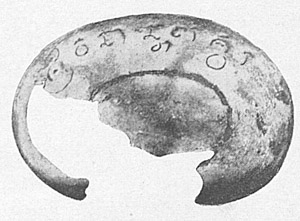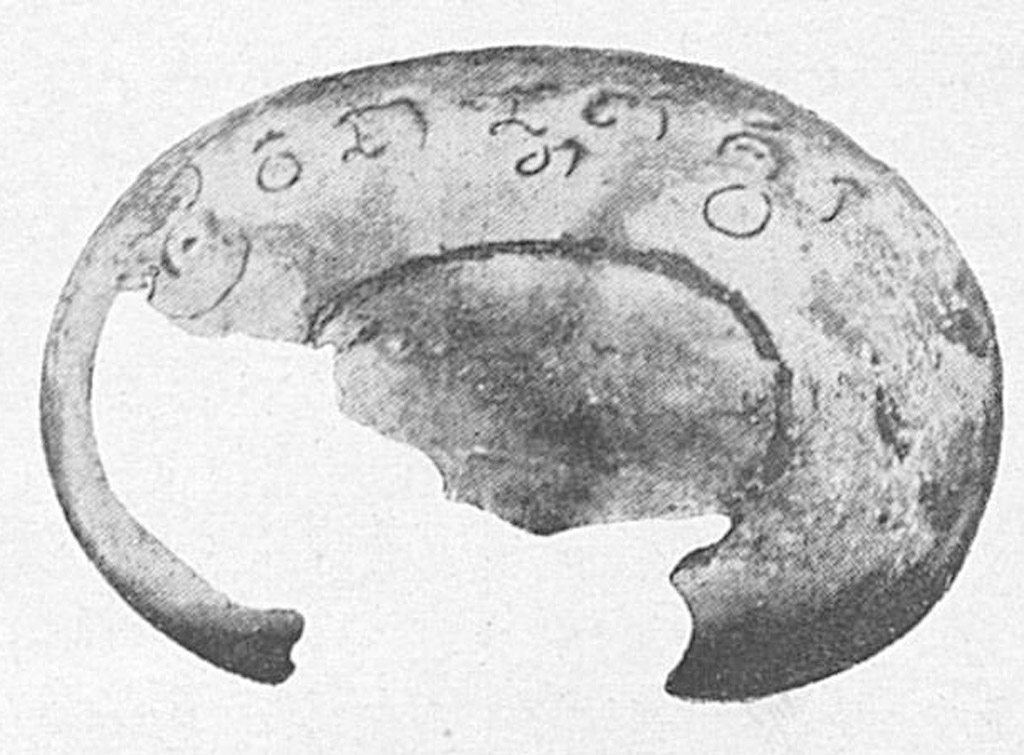Corpus of the Inscriptions of Campā


C. 144 Dish
Please note: you are reviewing a preprint version of this publication. Contents here may change significantly in future versions. Scholars with specific interests are urged to consult all cited bibliography before using our texts and translations or drawing other significant conclusions.
Support Dish;1 silver alloy; measurements not recorded.
Text One line written in Old Cam.
Date 10th or 11th century CE.2
Origin Settlement of La Thọ (Điện Bàn, Quảng Nam).
The dish was found during excavations in 1911 (BEFEO 11/3-4: 471; Rougier 1912: 211-212). It entered the collection of the EFEO's Museum at Hanoi under inventory number D 22, 8 as recorded in the supplement to the inventory of inscriptions in BEFEO 1915/1, p. 175. It was presumably among the pieces moved from Hanoi to Saigon in 1954 (see C. 118, C. 143 and C. 145) but has not been mentioned as such (Phạm Hữu Mý & Vương Hải Yến 1994: 28-29) and was indeed not found at the Museum of Vietnamese History in Hồ Chí Minh City during our visits in 2009 and following years (ECIC III: 475).
Edition(s) Object published as patène (“dish”), with reading, in BEFEO 11/3-4: 471; then published again as patère (“clothes hanger”), with the same reading, in Rougier 1912: 212. Based on these publications Majumdar 1927: 227, Schweyer 1999: 348 and Golzio 2004: 58-59. This edition identical to the previous ones.
Facsimiles
- : n.
- : n.
The following text was edited by Arlo Griffiths.
Commentary
Notes
- The object, properly called a patène in French, has in some publications been misidentified as patère, probably in origin a typographical error.
- It is not clear why Golzio 2004: 58 assigns this inscription to the 9th century. The shape of the akṣara ra suggests a somewhat later date.



The inscription consists in nothing more than the name Śrī Vanāntareśvara, presumably the deity for whose cult this dish was intended to be used. The name figures elsewhere only in C. 145, but cf. also the word vanānthara (sic) in C. 4, face A, l. 4. Although the text contains not a single Cam morpheme, in the absence of Sanskrit case morphology, we classify the language as Old Cam.